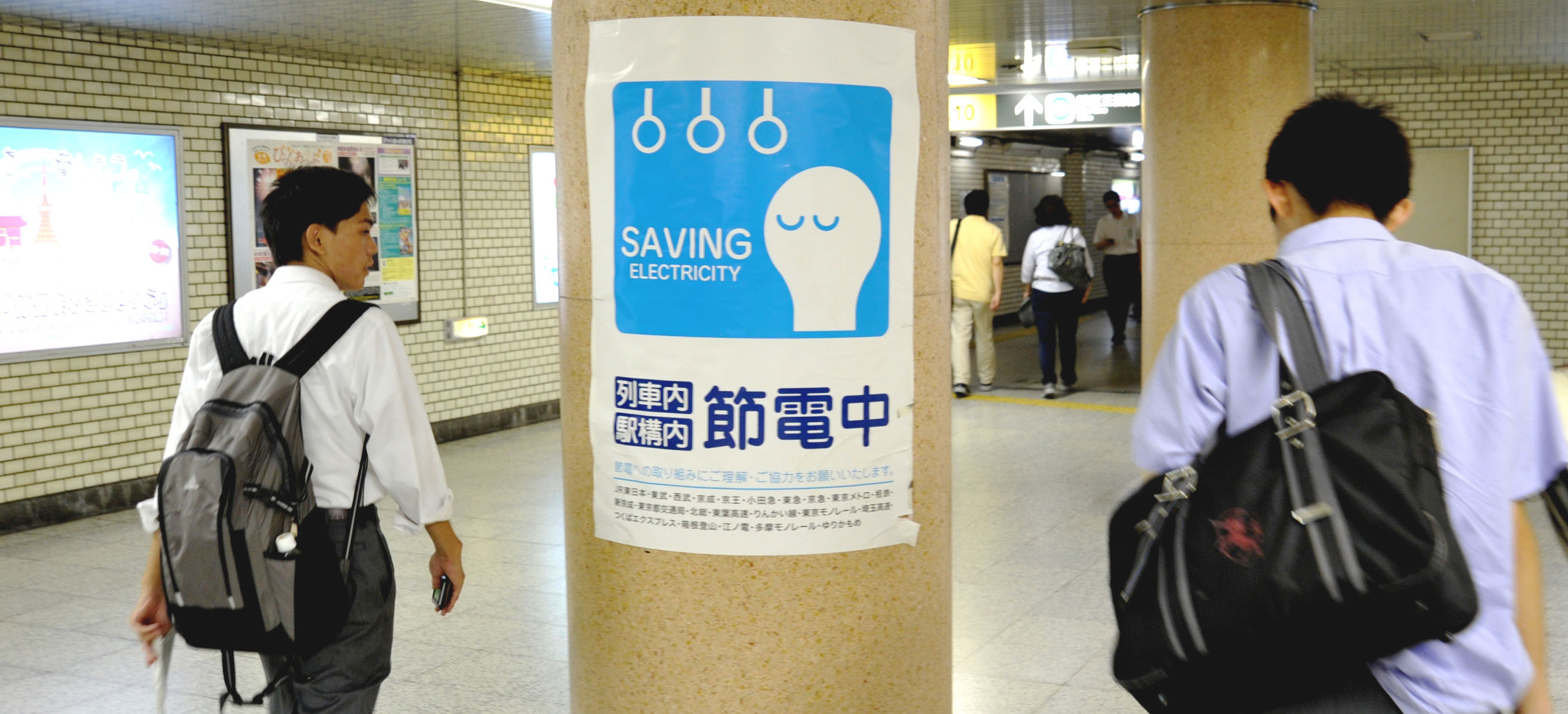Now that all but one of Japan's usable nuclear reactors have been halted as a result of the Fukushima No. 1 power plant disaster — which followed the March 11, 2011, earthquake and tsunami — the nation's households, small businesses and factories will once again plow forward through the hot summer following the government's policy of 節電 (setsuden, economize/electricity, "conserving electricity"), which was first implemented last year.
Drawing on the spirit of gaman (stoicism) deeply embedded in Japanese culture, the great majority (nearly 90 percent) of Japan's energy consumers indicate in surveys they are willing to cooperate at least to some extent in the 節電 campaign, including keeping air-conditioners at the sweltering government-recommended temperature of 28 degrees and, in some regions, rearranging their home and work lives around upcoming rolling power blackouts.
But for a nation that has long depended on nuclear reactors for approximately a third of its power, 節電 will still be a challenge. In an endless stream of public service announcements, the government is offering detailed advice on how to practice 節電. This two-kanji compound word screams out at passersby outside electrical appliance stores and on advertising flyers for power-efficient air conditioners. The agency recommends keeping your filters clean and your thermostats on a higher setting.



















With your current subscription plan you can comment on stories. However, before writing your first comment, please create a display name in the Profile section of your subscriber account page.